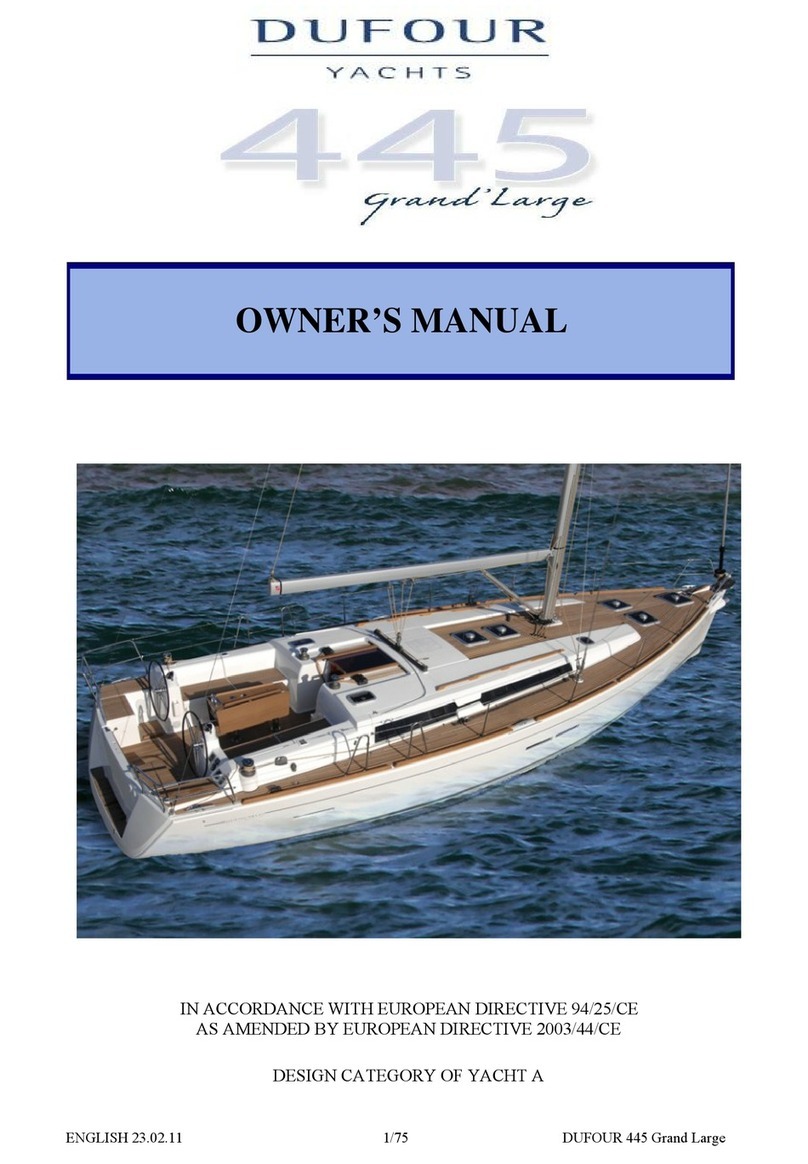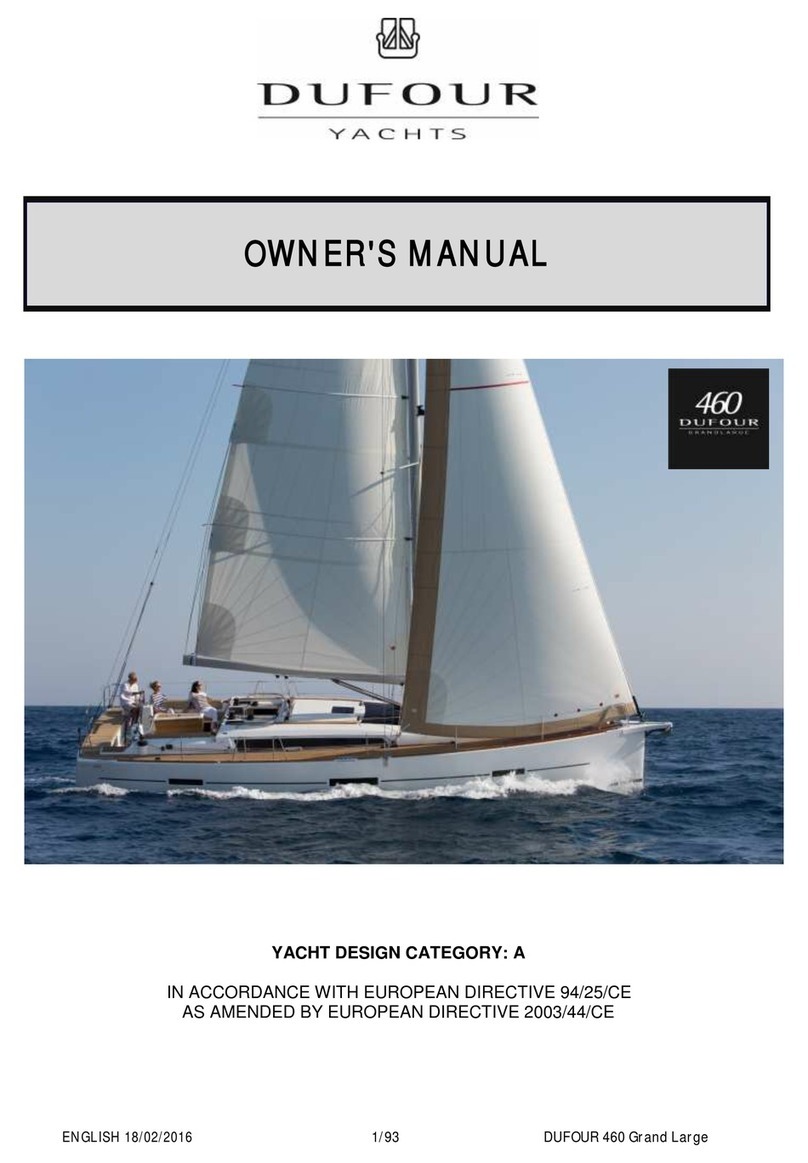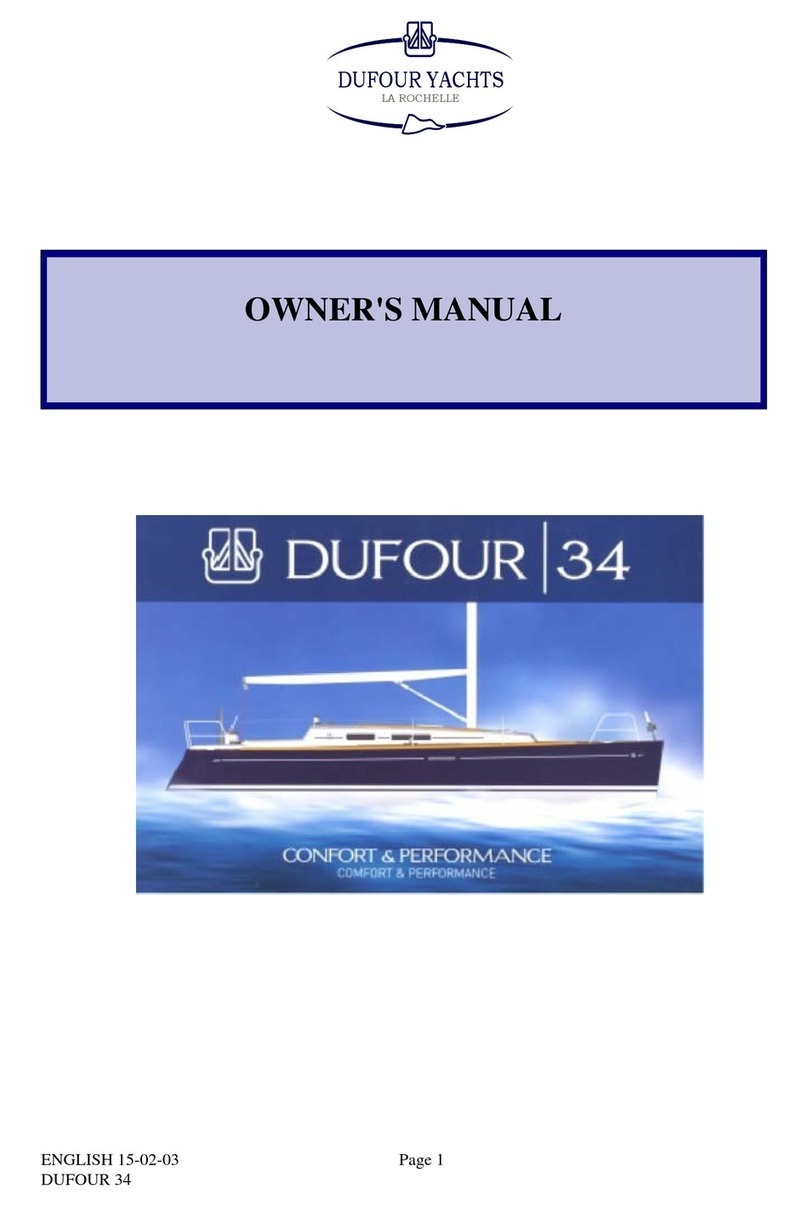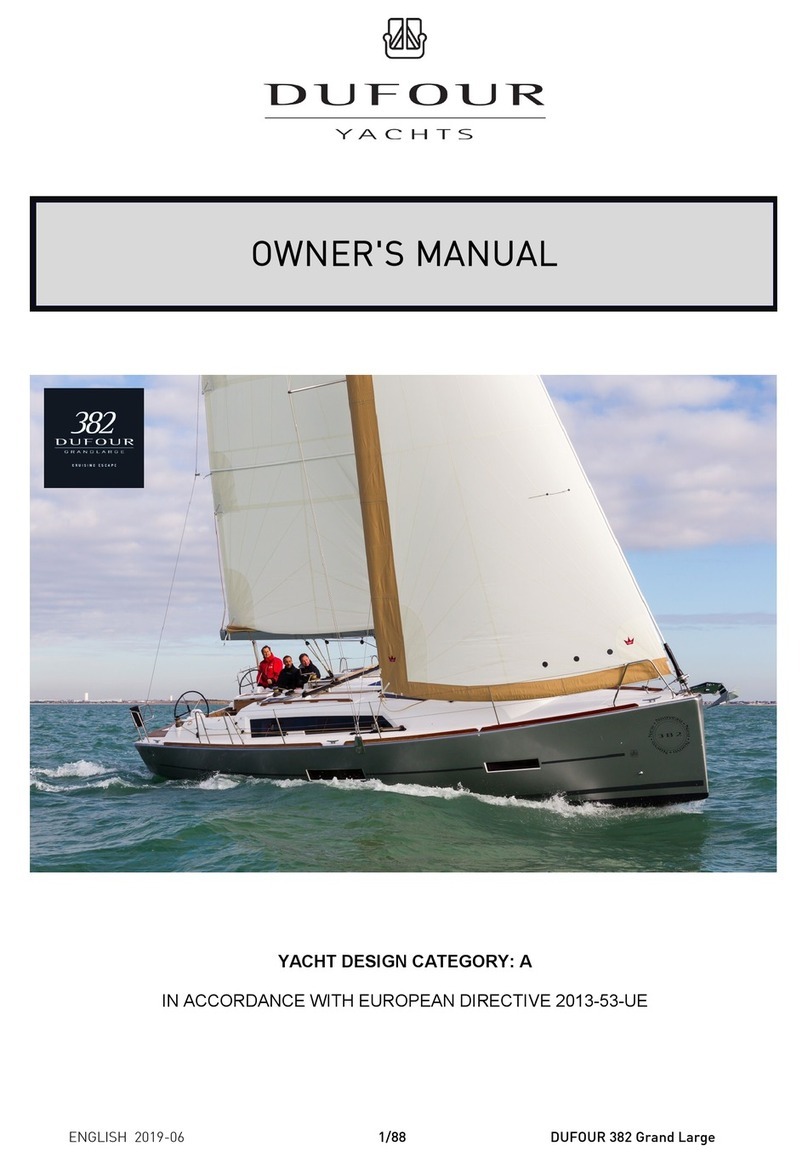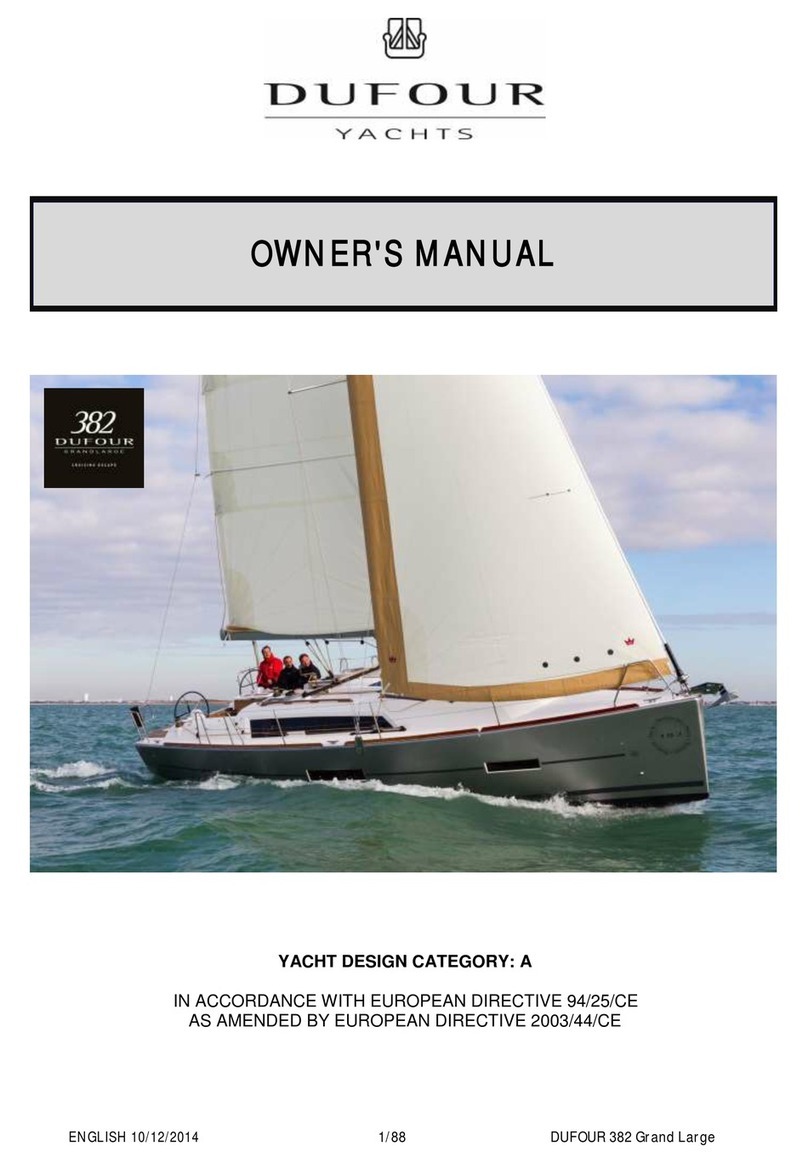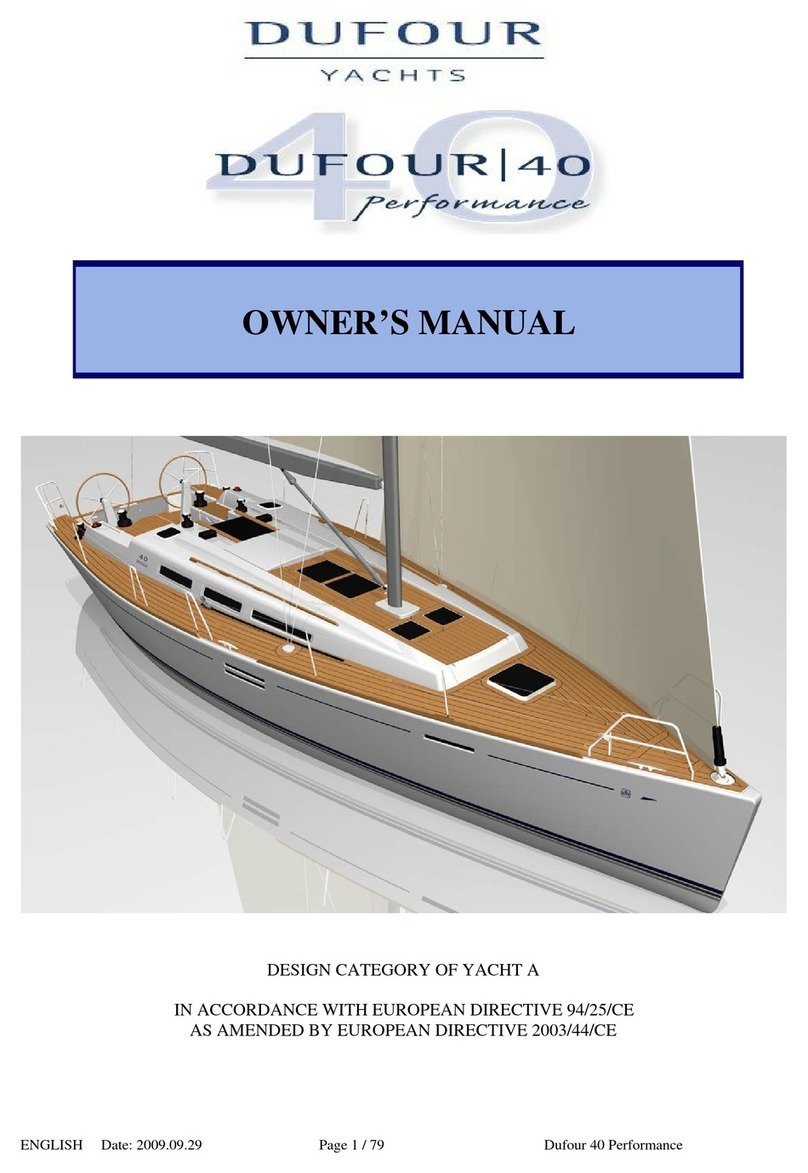
ENGLISH 2008-11-18 Page 5 / 80
DUFOUR 365
CONTENTS
INTRODUCTION____________________________________________________________________________7
I. GENERAL INFORMATION __________________________________________________________8
A. Design category _____________________________________________________________________8
B. Certification ________________________________________________________________________8
C. Identification _______________________________________________________________________ 8
D. Builder's plate ______________________________________________________________________ 9
II. PRINCIPAL SPECIFICATIONS______________________________________________________10
III. ELECTRICAL SYSTEMS____________________________________________________________11
A. Safety and operating instructions for the electrical system _________________________________ 11
B. Installing new equipment ____________________________________________________________ 11
C. Batteries __________________________________________________________________________12
D. Electric windlass____________________________________________________________________12
E. 220 / 110 Volt installation ____________________________________________________________13
IV. GAS INSTALLATION_______________________________________________________________ 14
A. Operating advice ___________________________________________________________________ 14
B. Checking the system ________________________________________________________________15
C. Changing the gas cylinder____________________________________________________________15
V. DRAIN & SANITATION SYSTEM ____________________________________________________ 16
A. Specifications of the drain system _____________________________________________________ 16
B. Pressurized fresh-water pump ________________________________________________________ 16
C. Seacocks __________________________________________________________________________17
D. Operation of the sea toilets ___________________________________________________________17
VI. FLOODING _______________________________________________________________________ 18
VII. FIRE PROTECTION _______________________________________________________________ 18
A. Installation ________________________________________________________________________ 18
B. Safety instructions __________________________________________________________________19
VIII. ENGINE__________________________________________________________________________20
A. General precautions_________________________________________________________________ 20
B. Exhaust gas emission________________________________________________________________20
C. Safety_____________________________________________________________________________20
D. Wintering _________________________________________________________________________21
IX. FUEL INSTALLATION _____________________________________________________________21
X. STEERING SYSTEM _______________________________________________________________ 21
A. Steering wheel _____________________________________________________________________21
B. Emergency tiller____________________________________________________________________21
XI. SAILING _________________________________________________________________________ 22
XII. LIGHTNING PROTECTION _________________________________________________________23
A. Maintenance_______________________________________________________________________23
B. Protection of persons during a storm___________________________________________________ 23
XIII. ENVIRONMENTAL PROTECTION & SAFETY_________________________________________23
XIV. SAFETY FACILITIES ______________________________________________________________24
XV. HANDLING, TRANSPORTING, HAULOUT ____________________________________________25
XVI. GUARANTEE CONDITIONS, TRANSFER OF OWNERSHIP ____________________________26
I. Presentation plan___________________________________________________________________ 30

